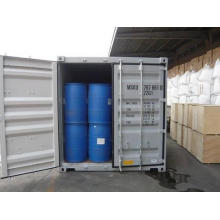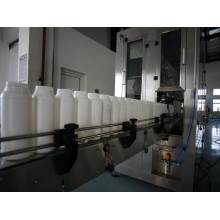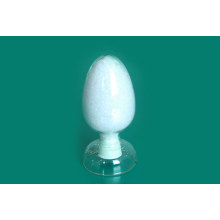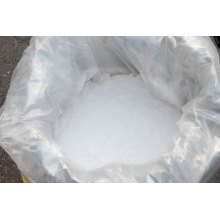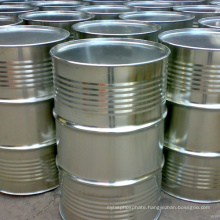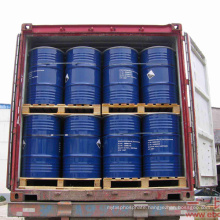Picking up the hair must look at the formula
2021-05-23
In the past few years, shampoo products have emerged in an endless stream, and the variety of slogans and complex formulas are dazzling. Recently, the Japanese beauty health network "Wooris" combines the characteristics and main ingredients of common shampoos on the market to help you find suitable and safe shampoo products according to your own situation.
Acetic acid: suitable for hairy hair.
Formulation table keywords: sodium laureth-3 acetate, chlorhexidine acetate (chlorhexidine) and the like.
This type of shampoo is characterized by a rich foam, but has a slightly decontaminating and detergency. Because it is weakly acidic, it is less irritating to the scalp and can interact with the charge on the hair to keep the hair smooth and flat.
Amino acid system: suitable for dry hair.
Formula table keywords: sodium lauroyl glutamate, sodium lauroyl ether, and the like.
These shampoos are naturally weakly acidic and have a slightly lower detergency, but because the hair and scalp are also weakly acidic, they are less irritating and have a moisturizing ability. The shampoo used in the hairdressing salon is almost entirely in this line, which is good for the maintenance of the scalp and hair, but at a higher cost.
Betaine: Suitable for sensitive skin.
Formula table keywords: sodium cocoyl glutamate, cocamidopropyl betaine and the like.
These ingredients are extracted from beets. They are less irritating than amino acid shampoos and have a better moisturizing effect. They are suitable for people with sensitive skin and are also good for repairing damaged hair.
Glucosamine system: suitable for daily care.
Recipe table keywords: "a certain glucoside", such as dodecyl glucoside.
The main component of this shampoo is extracted from glucose, which has a weak detergency, but is less irritating, safe, and rich in foam. It is usually mixed with amino acids to enhance the decontamination effect without reducing safety.
Protein system: suitable for damaged hair.
Recipe table keywords: hydrolyzed collagen, milk, etc.
Such shampoos mainly contain protein components such as milk and collagen. Less foam, the most expensive, but very nourish the hair, repair the protein damage.
In addition to the above five types of shampoo, there are two types of shampoo, which may cause damage to the hair. Consumers are advised to use it cautiously.
Sulfuric acid system: relatively cheap.
Formulation table keywords: sodium lauryl ether sulfate (SLES), sodium lauryl sulfate (SLS) and the like.
This ingredient has a low production cost and is commonly used in inexpensive shampoos. This type of shampoo is extremely decontaminating, but it can also wash off the essential oils that are good for the scalp and healthy hair.
Stone base: It will dry the hair.
Formula table keywords: fatty acid sodium salt, Sodium Hydroxide (Caustic Soda) and so on.
The advantages of this type of shampoo are that it has strong detergency cleaning power and superior biodegradability, so it is environmentally friendly. However, because it is alkaline, it is easy to dry the scalp and hair, and too strong detergency can easily wash off the necessary sebum.
Sodium Lauryl Ether Sulfate (SLES),white or yellowish paste, an anionic detergent and surfactant found in many personal care products (soaps, shampoos, toothpaste, etc.). SLES is an inexpensive and very effective foaming agent.SLES, sodium lauryl sulfate (SLS), ammonium lauryl sulfate (ALS), and sodium pareth sulfate are surfactants that are used in many cosmetic products for their cleaning and emulsifying properties. They behave similarly to soap. It is derived from palm kernel oil or coconut oil.
Its chemical formula is CH3(CH2)11(OCH2CH2)nOSO3Na. Sometimes the number represented by n is specified in the name, for example laureth-2 sulfate. The product is heterogeneous in the number of ethoxyl groups, where n is the mean. Laureth-3 sulfate is common in commercial products.
SLES is prepared by ethoxylation of dodecyl alcohol, which is produced industrially from palm kernel oil or coconut oil. The resulting ethoxylate is converted to a half ester of sulfuric acid, which is neutralized by conversion to the sodium salt.[1] The related surfactant sodium lauryl sulfate (also known as sodium dodecyl sulfate or SDS) is produced similarly, but without the ethoxylation step. SLS and ammonium lauryl sulfate (ALS) are commonly used alternatives to SLES in consumer products.
SLES is a kind of anionic surfactant with excellent performance.
It has good cleaning, emulsifying, wetting, densifying and foaming performance,with good solvency, wide compatibility, strong resistance to hard water, high biodegradation, and low irritation to skin and eye.
1.SLES(Sodium Laureth Sulphate) widely used in liquid detergent.; e.g. Shampoo, dishwashing detergent, bubble bath liquid, hand washing etc.
2.If using SLES(Sodium Lauryl Ether Sulfate) to replace LABSA partially, phosphate can be saved or reduced, and general dosage of active matter may be reduced, in washing powder and detergent for heavy dirty.
3.SLES(Sodium Lauryl Ether Sulphate) can be used as lubricant, dyeing agent, cleanser, foaming agent and degreasing agent.; e.g. printing and dyeing industry, petroleum and leather industry.
Lauryl Ether Sulfate, Sodium Lauryl Ether Sulfate, Sodium Laureth Ether Sulfate, Sodium Lauryl Ether Sulfate Detergent
Plastic Materials Co., Ltd. http://www.hncarbonblack.com
